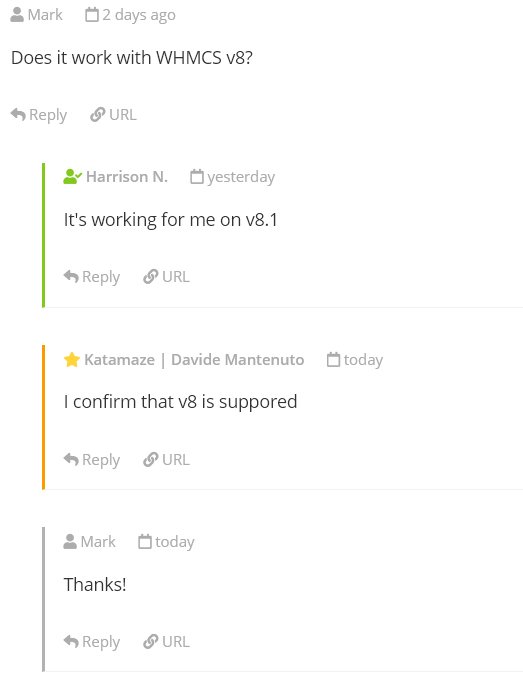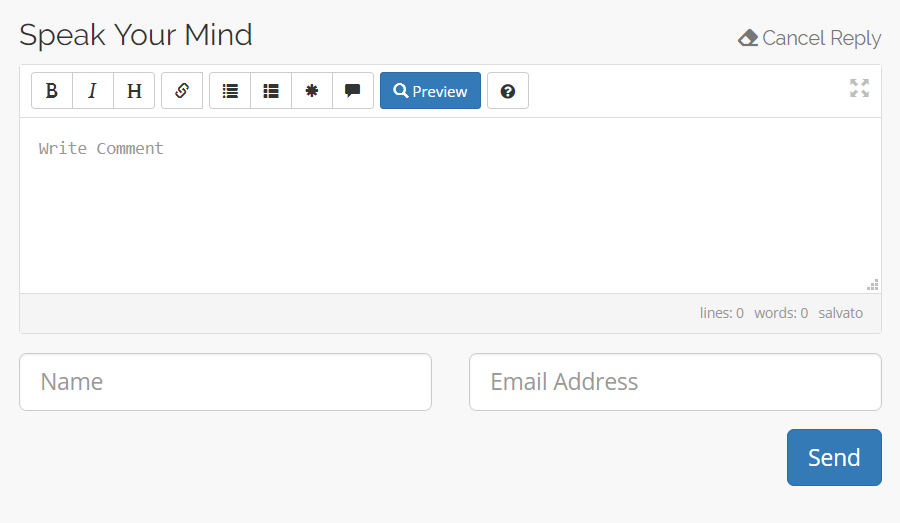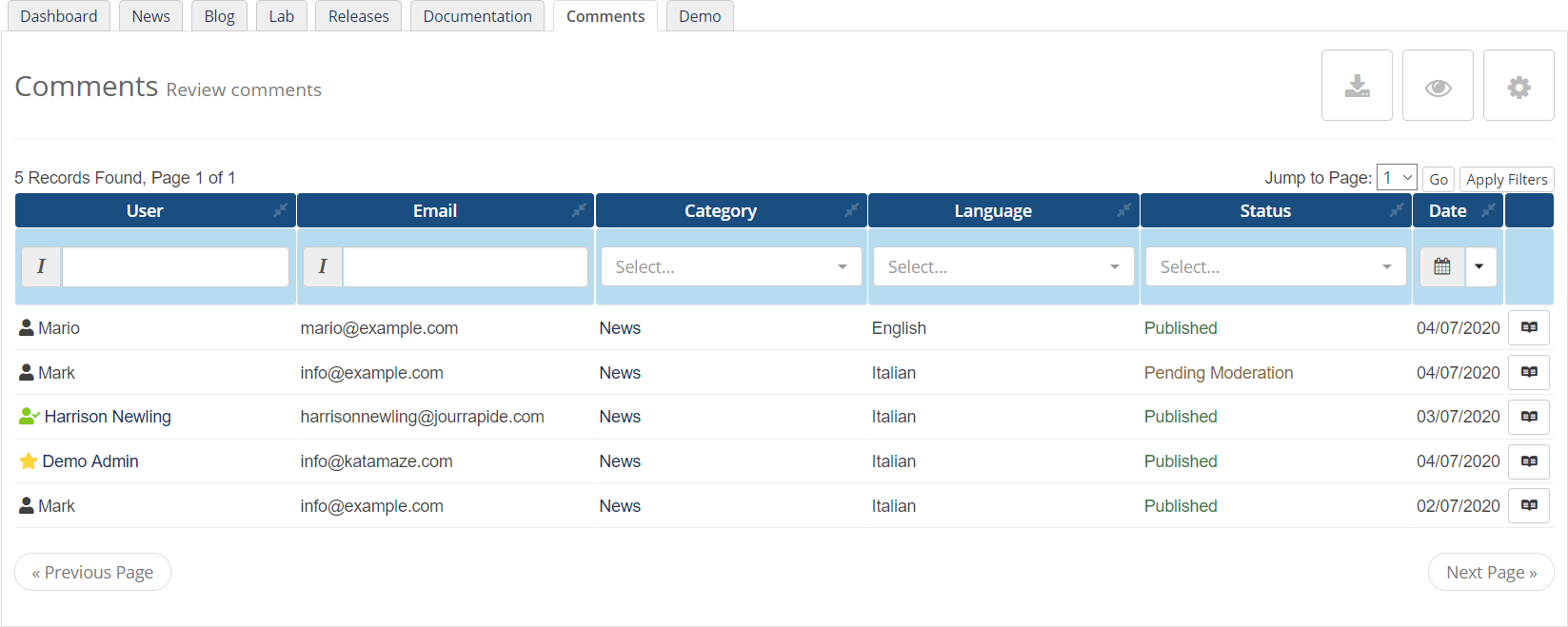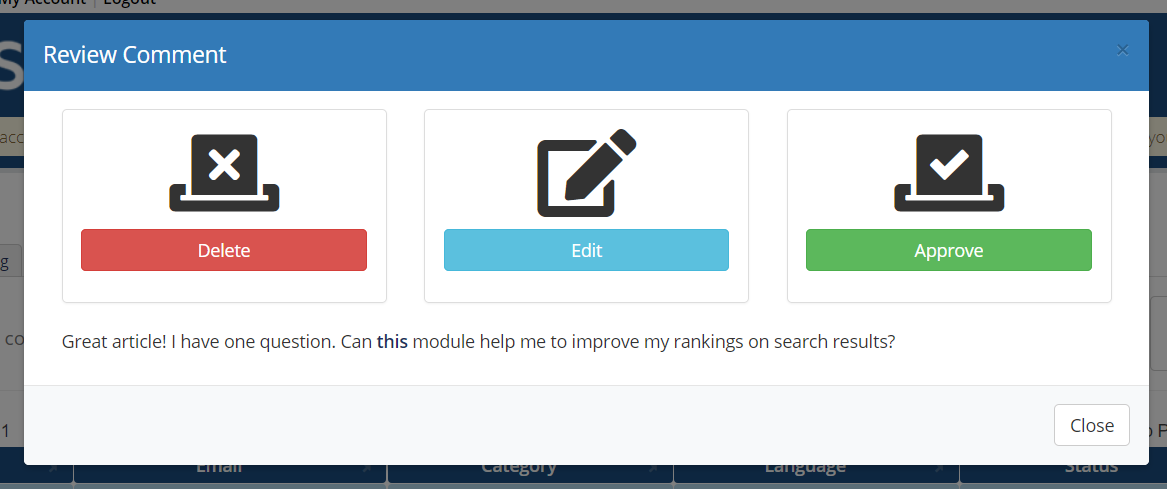Commenti
Aumenta il coinvolgimento in WHMCS
Uno dei modi migliori per aumentare le vendite è quello di costruire una community e portare più traffico nel sito. Un CMS come WordPress eccelle in questo aspetto ma come sai WHMCS non è di grande aiuto. È per questo che si utilizza Mercury per attrarre nuovi clienti creando contenuti di interesse con pieno supporto Search Engine Optimization.
Fino a qui è tutto regolare ma non è possibile creare una community se non c'è modo per i visitatori e gli utenti di interagire con te. Non disperare, Mercury incorpora un sistema per i commenti che permette ai visitatori e agli utenti di interagire con i tuoi contenuti. I commenti possono essere abilitati selettivamente per:
A titolo d'esempio puoi consetire i commenti nel blog ma non alle news ed agli articoli della documentazione. La scelta è tua. Per darti un'idea di come funziona, puoi osservare il nostro stesso sito che utilizza Mercury e permette di commentare qualsiasi contenuto.
Commenti multi-lingua
Questo è uno dei nostri post più popolari nel quale abbiamo condiviso gratuitamente un sacco di action hook utili.
| Commenti multi-lingua |
|---|
 https://katamaze.com/blog/32/whmcs-action-hooks-collection-2020-updated-monthly https://katamaze.com/blog/32/whmcs-action-hooks-collection-2020-updated-monthly https://katamaze.it/blog/32/action-hook-whmcs-collezione-2020-aggiornata-ogni-mese https://katamaze.it/blog/32/action-hook-whmcs-collezione-2020-aggiornata-ogni-mese |
Il post è disponibile sia in inglese che in italiano. Come potrai immaginare chi parla inglese utilizza la versione inglese del post e commenta in inglese. Analogamente gli italiani utilizzano l'altra versione e commentano in italiano.
Non c'è niente di più fastidioso di avere i commenti in più lingue. Ecco perché in Mercury i commenti sono separati per ogni lingua. Puoi osservarlo confrontando la sezione commenti di entrambe le pagine. Visto che ci sei sentiti libero di prendere qualche action hook o di richiederne di nuovi.
Personalizzazione sistema commenti di WHMCS
Iniziamo dalle basi. Puoi impostare la lunghezza minima e massima dei commenti ed un "Tag" per i membri del tuo staff. Questi nel rispondere ai commenti vengono messi in evidenza con un nome colorato, un badge e facoltativamente un tag. In basso c'è un'anteprima (clicca per ingrandire) nella quale vuoi vedere il nostro tag (Katamaze) che precede il nome dell'amministratore.
L'immagine ci dà anche l'opportunità di mostrare che il modulo prevede 3 diversi ruoli utente:
- I grigio i visitatori (più informazioni nel capitolo successivo)
- In verde gli utenti registrati in WHMCS
- In arancione gli amministratori WHMCS
Commenti da visitatori
Consentire ai visitatori di commentare apre a nuovi scenari di comunicazione ma se lo desideri puoi disattivare questa opzione rendendo obbligatoria la registrazione. Prima di poter commentare, i visitatori devono indicare un nickname ed un indirizzo email valido (clicca per ingrandire).
Moderazione commenti
Mercury integra la validazione dei dati, Google reCAPTCHA ed Invisible CAPTCHA al fine di proteggere il tuo WHMCS dallo spam e per fermare i bot. Tieni presente che il codice di verifica a 5 caratteri NON è supportato dal momento che è noto essere inutile (qualsiasi bot può aggirarlo). Al fianco di questi sistemi di protezione, c'è la possibilità di moderare i commenti. Puoi utilizzarla per impedire che i commenti appaiano sul sito senza la tua espressa approvazione.
Puoi moderare i commenti individualmente cliccando sull'icona a destra. Questo apre un modale che mostra l'anteprima del commento e dà la possibilità eseguire 3 azioni: elimina, modifica, approva.
Ovviamente è possibile anche moderare i commenti massivamente. Clicca l'icona dell'ingranaggio nell'angolo in alto a destra. Ciò consente di accedere nelle modalità Approva, Modifica ed Elimina. Ti ricordiamo che i commenti inviati dagli amministratori di WHMCS non richiedono approvazione. Inoltre l'eliminazione di un commento porterà all'eliminazione anche delle eventuali risposte correlate.

Contenuto
Mercury utilizza l'editor MarkDown per i commenti. In questo modo le persone possono comporre testi facili sia da scrivere che da leggere (liste, grassetto, italico, link, codice...). Per quanto riguarda i link, tutti i link esterni (quelli non definiti nel multi-brand e multi-dominio) vengono automaticamente impostati come "nofollow" e si aprono in un nuovo tab.
Funzioni in arrivo
C'è ancora molto altro da fare ed abbiamo in programma di aggiungere le seguenti funzionalità nelle prossime release:
- Possibilità di mettere "Mi piace" ai commenti, impostare nickname e caricare avatar
- Notifiche email quando viene inserita una risposta
 Billing Extension 37
Billing Extension 37
 Commission Manager 3
Commission Manager 3
 Mercury 8
Mercury 8
 Payments Bundle 2
Payments Bundle 2










Commenti (0)